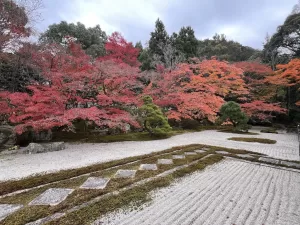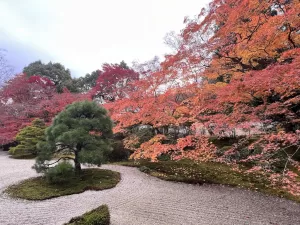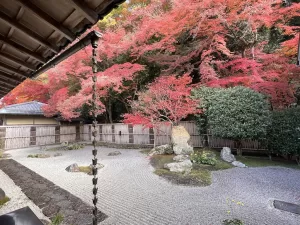A Symphony of Colors — Surprising Delights at the Nanzen-ji Temple
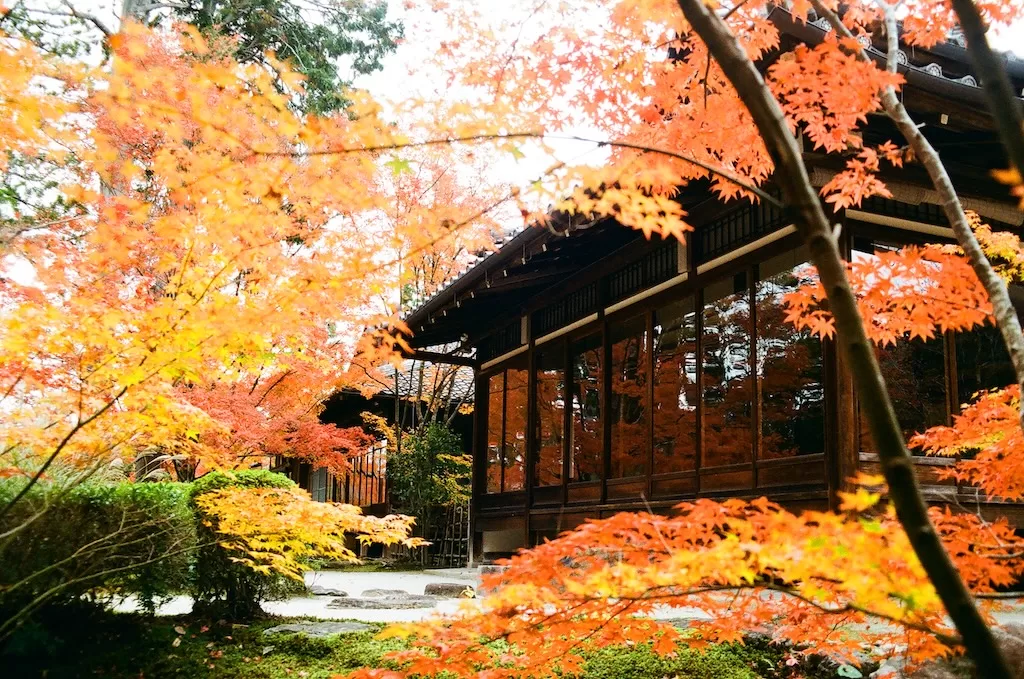
Nanzen-ji Temple is one of the most important Zen temples in Japan. Nestled in the foothill of the Higashiyama mountains, Nanzen-ji Temple has an enormous temple ground that accommodates many sub-temples, as well as a 19th century aqueduct. This presents tourists the opportunity for a variety of scenery in the tour. Needless to say, the late 13th century temple is itself a history lesson to learn, besides the messages that inform the philosophy of life at its famous Zen karesansui garden.
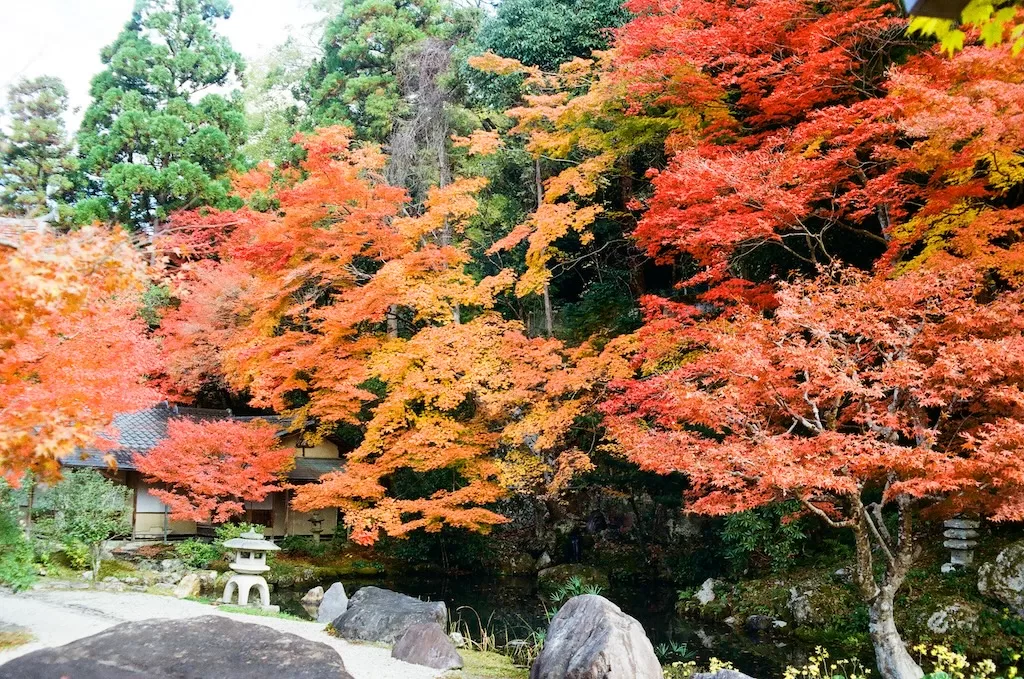
The History of the Nanzen-ji Temple
Nanzen-ji Temple began as Emperor Kameyama’s retirement villa, a detached palace called Zenrin-ji palace during the middle of the Kamakura period in 1264. The name of this palace was taken in reference to the Eikando-ji Temple, which lies nearby to the north of Nanzen-ji Temple.
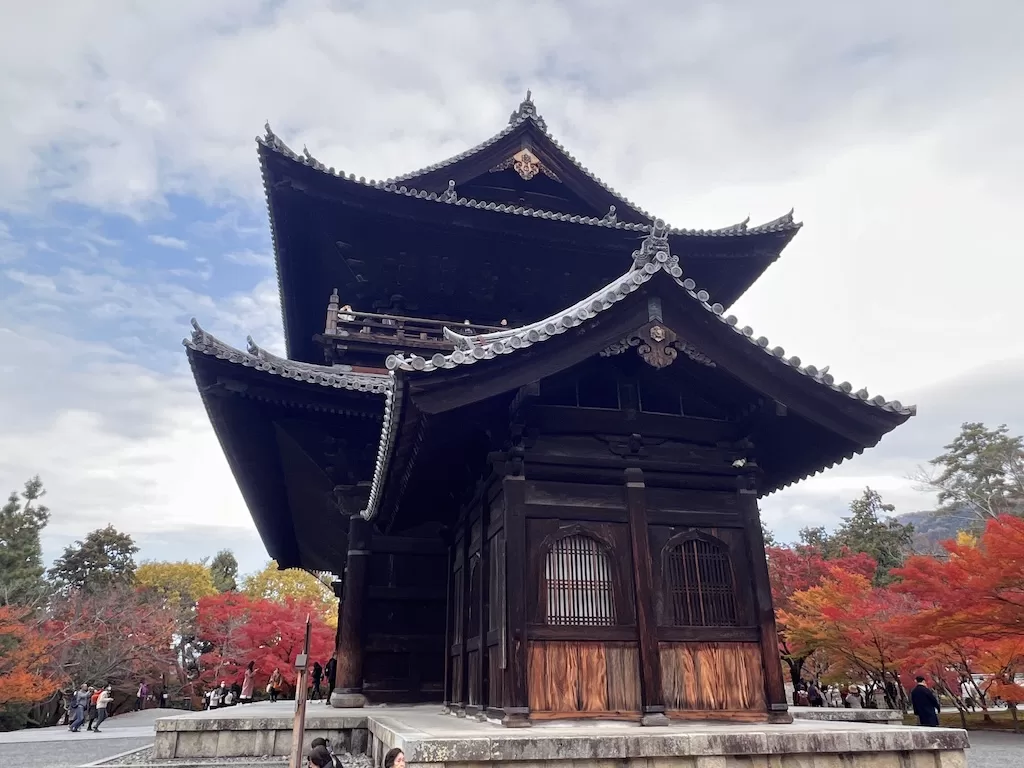
In 1287, Emperor Kameyama built a temple in the palace, and this temple stood for the inception of the villa’s religious nature. The original villa was turned into a temple in 1291, two years after Emperor Kameyama abdicated the throne and turned to the life of ascetism as a monk in 1289. By then, Nanzen-ji Temple has taken the form and substance as Japan’s “first temple of the land.”
Throughout its long history, the temple had experienced complete destruction during the civil wars of the Muromachi period (1333-1573). Reconstruction completed in 1597, and the temple continued to expand through the Edo period. However, in 1895, the Hatto was once again destroyed by fire. The current structure is a reconstruction in 1909.
The Religious Significance of the Nanzen-ji Temple
Nanzen-ji Temple is the head temple that oversees the Five Zen Mountains of Kyoto, of which Tenryu-ji Temple is one. In terms of its Buddhism, Nanzen-ji Temple is representative of the Rinzai school of Buddhism. Under its supervision are two tracks of great temples. The Five Zen Mountains of Kyoto was one, and the Five Zen Mountains of Kamakura was the other.
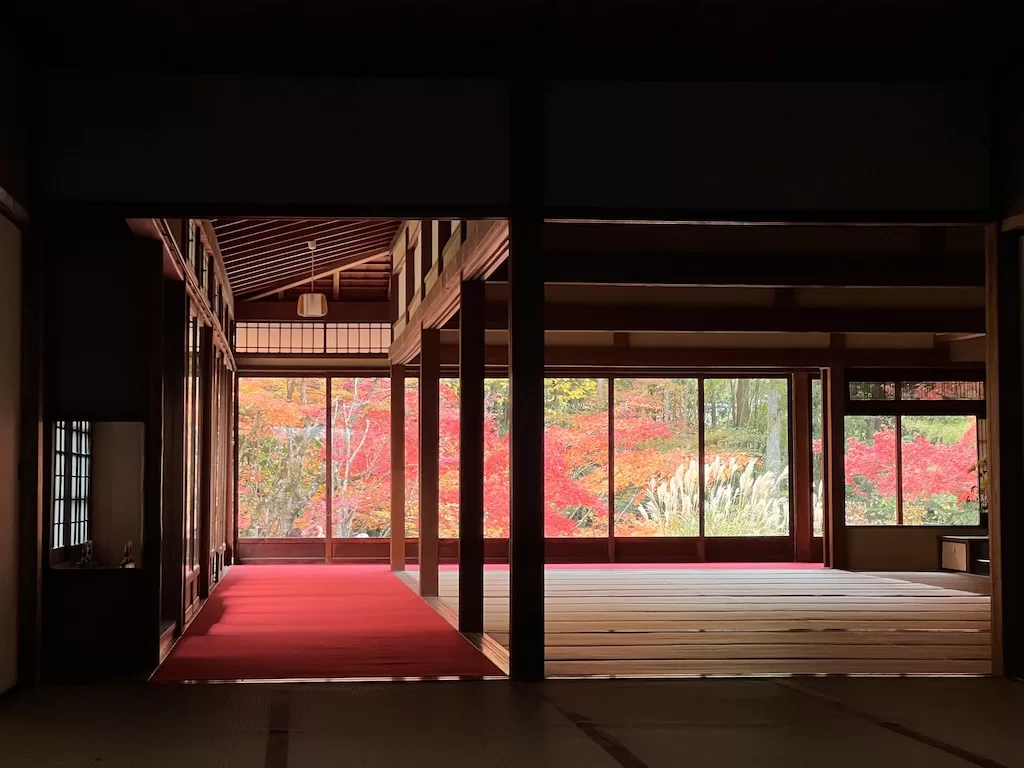
There are a number of exceptional features that Nanzen-ji Temple offers, making it a great destination for tourists. As with all temples in Japan, Nanzen-ji Temple is unique in its own right. I will briefly discuss some of the amazing features there that made the tour an incredible experience for me.
Sanmon
You won’t miss the stately wooden gate of Sanmon at the Nanzen-ji Temple. A structure of 1628, the Sanmon Gate was a gate established by the Tokugawa shogunate to commemorate the soldiers that died in the Osaka Castle siege. The very original Sanmon Gate of the 13th century had long been destroyed by fire in 1447.
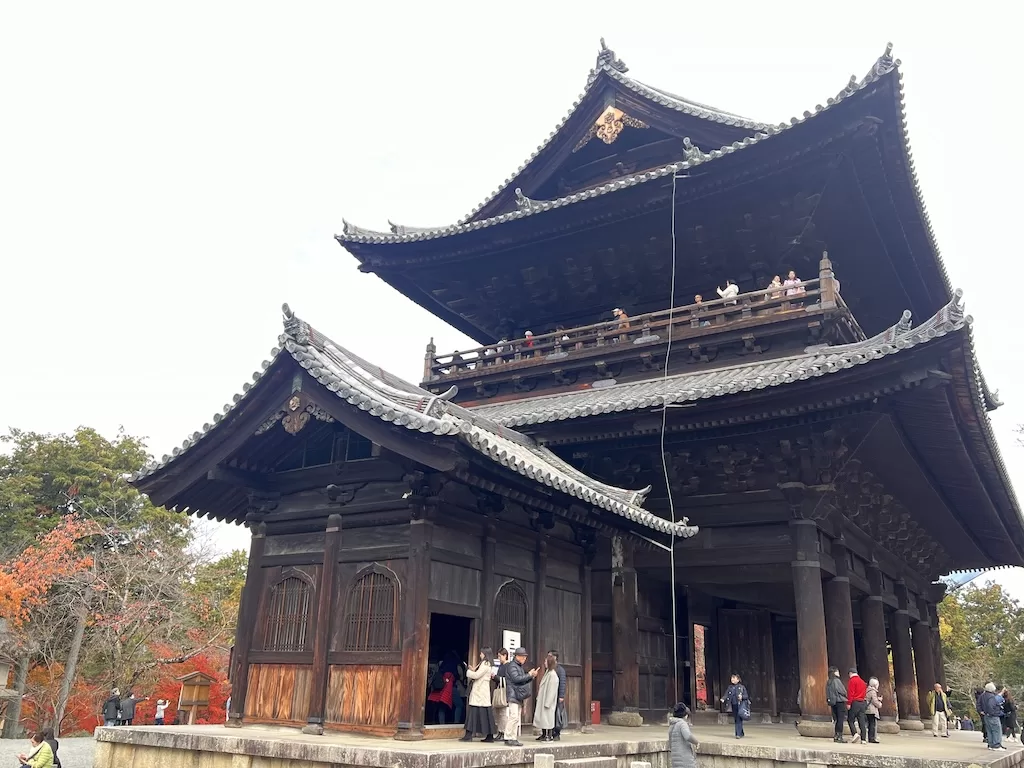
Meaning “three doors,” the Sanmon Gate of Nanzen-ji Temple is considered one of “Kyoto’s three main gateways.” The building has two stories. The upper level gives home to spirit tablets and precious Japanese artwork.
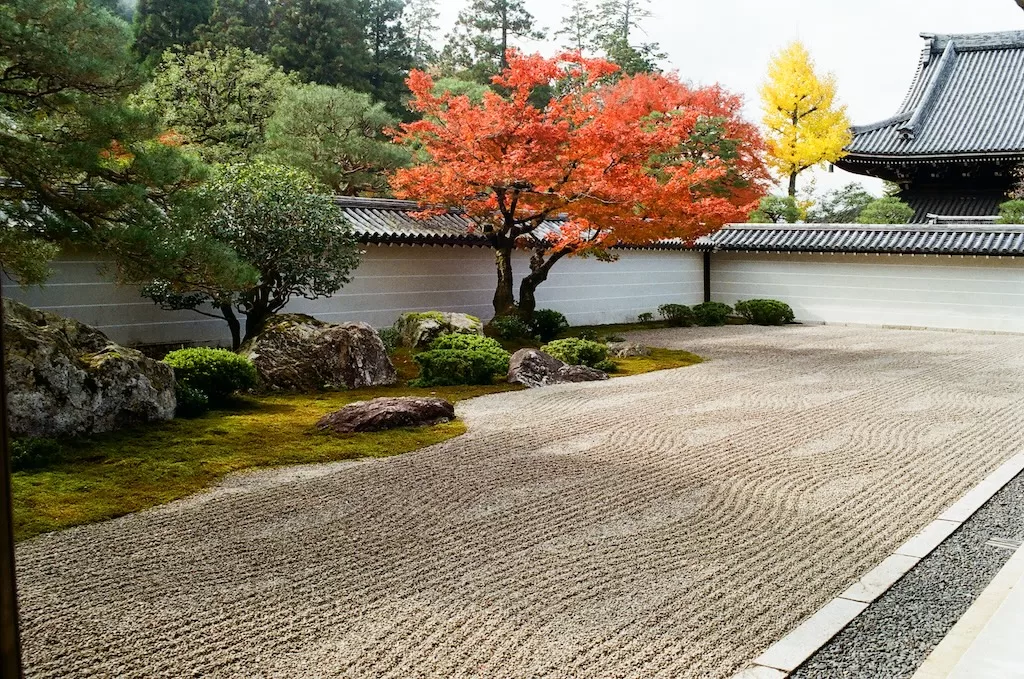
The Zen Garden at the Hojo
The Hojo is the abbot’s residence and the main hall of Nanzen-ji Temple.
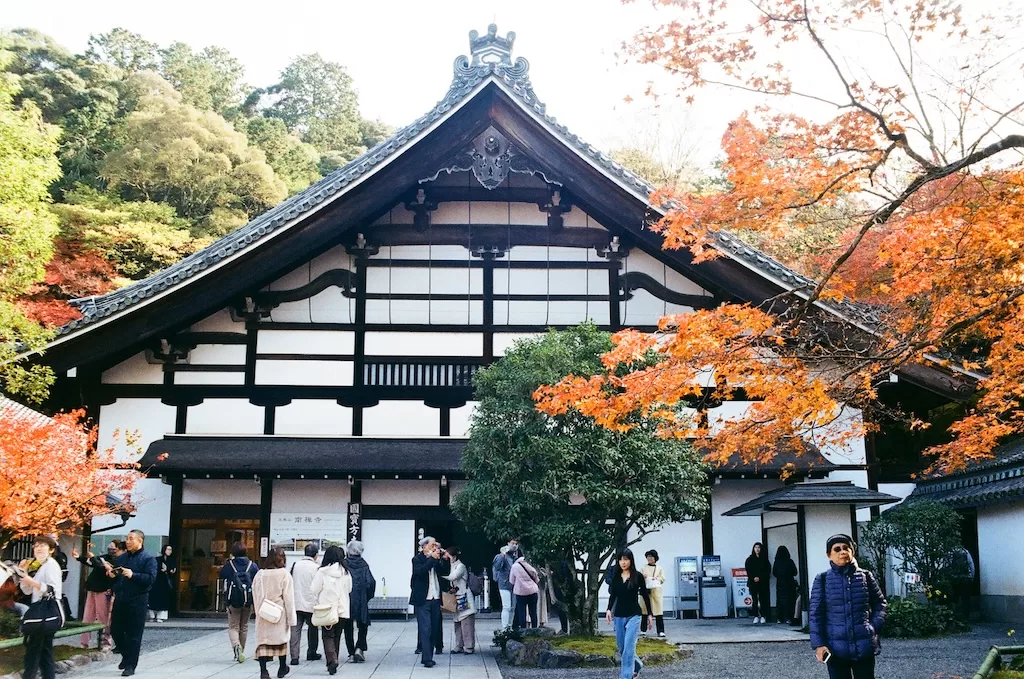
The key features to appreciate at the Hojo are the national grade cultural treasures of fusuma (sliding door) paintings, the artwork of the Kano school of artists in the 17th century; and the Zen rock garden, with an imagery of a mother tiger bearing her cubs across a river.
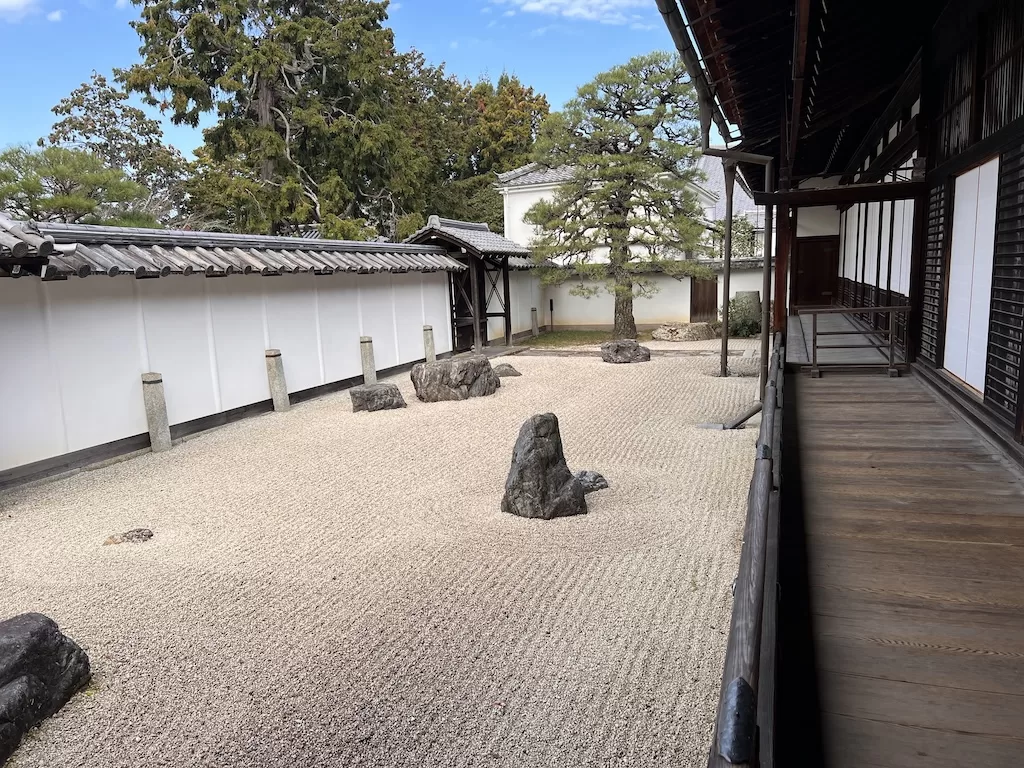
The Zen garden here was the work of Kobori Enshu, who was a 17th century tea ceremony and garden design master. He was known to have introduced “western perspectives” in his gardens, including the perfect ratio to achieve the visual effects that encourage meditation.
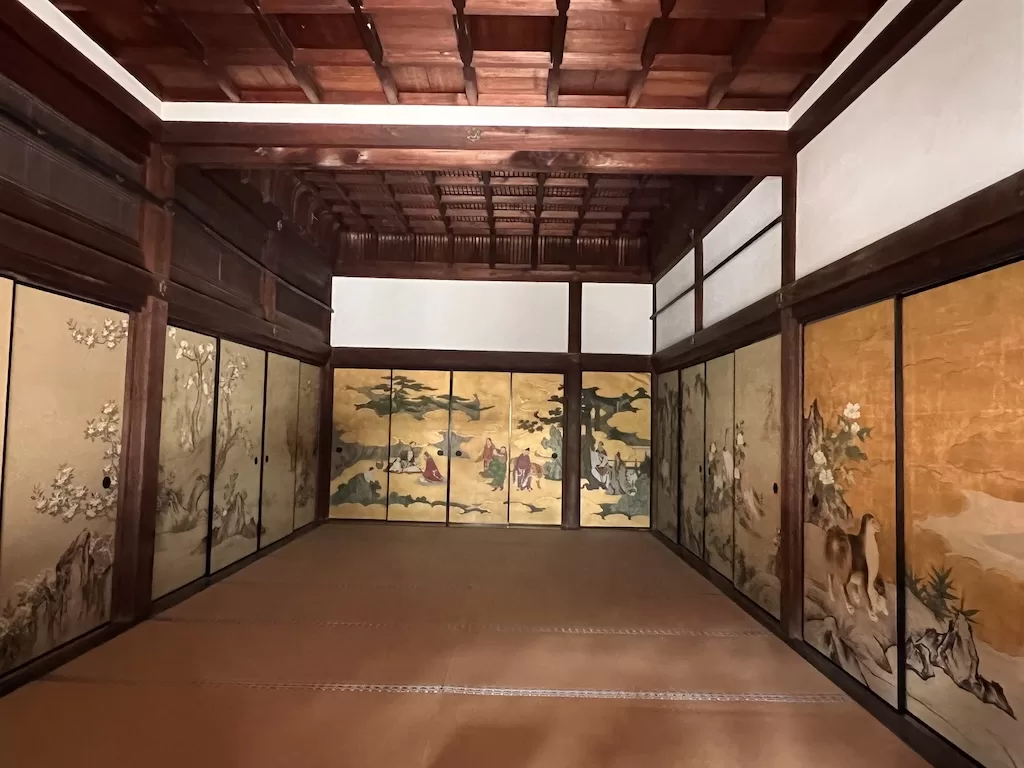
The Hojo is quite a big compound and the red foliage there was very beautiful. I did sit at the porch and admired the Zen garden. Despite the heavy foot traffic there, I did feel momentary peace.
Tenjuan Temple
Meaning “heaven given,” the Tenjuan Temple is a small sub temple of Nanzen-ji Temple, with a main hall, a study and two gardens of 17th century construction. This temple commemorates a Zen religious master that used to instruct Emperor Kameyama on Zen Buddhism.
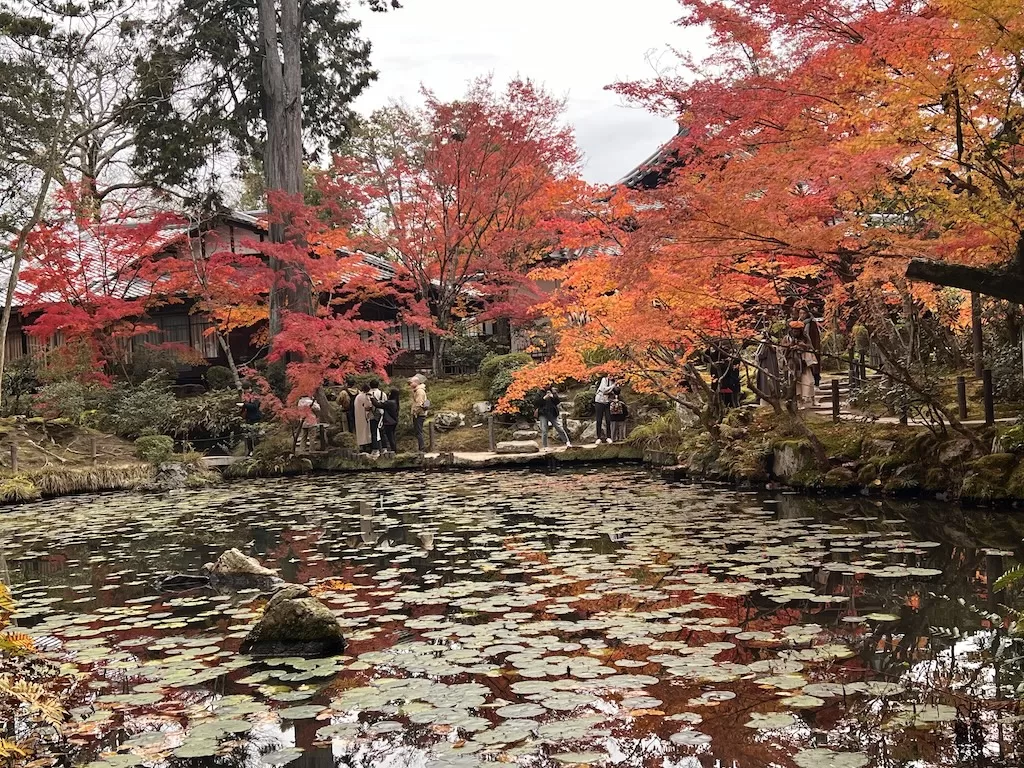
By this time of my tour in Kyoto, I had seen a dozen of temple and villa gardens already. Yet I was still amazed by Tenjuan Temple’s garden. In autumn time it has a charm that works in mysterious ways.
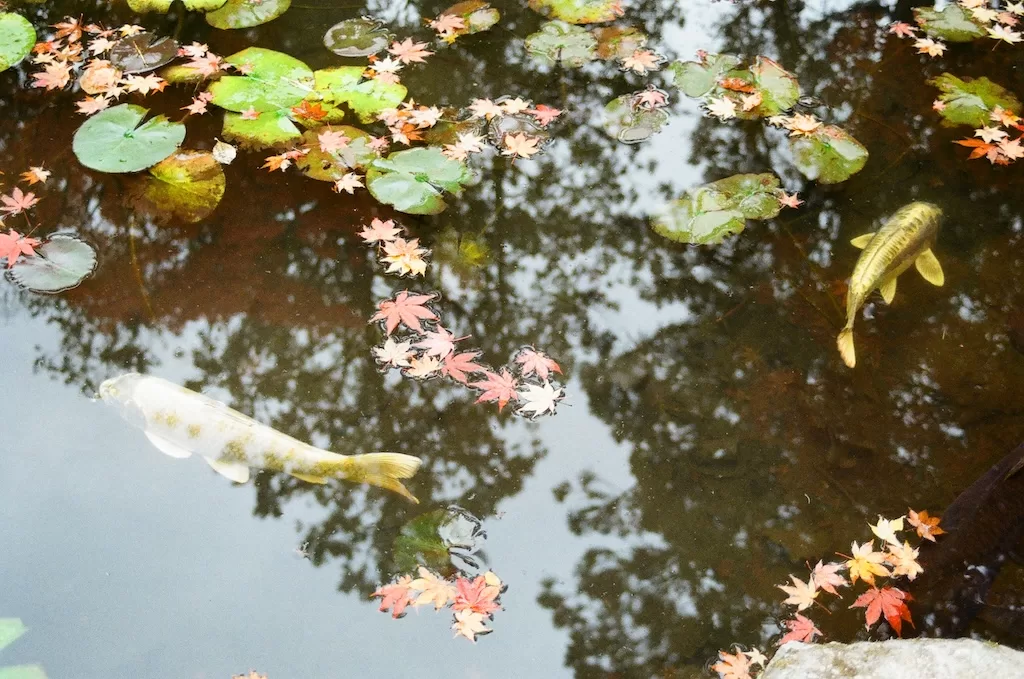
The day was brightly lit, but the Tenjuan Garden was cool with a warm penumbra, as trees with lush red foliage line the small pond. Large carps in gold and red swam sluggishly in the pond, their tails stroking the fallen maple leaves floating on the pond’s surface. This garden space by the pond reminds me of a gentlewoman of sublime grace. I might like this garden even more so than the Sogenchi garden of Tenryu-ji Temple.
Tourists must stroll in one direction from the main hall of the temple. I loved the garden space so much that I took two rounds at the pond.
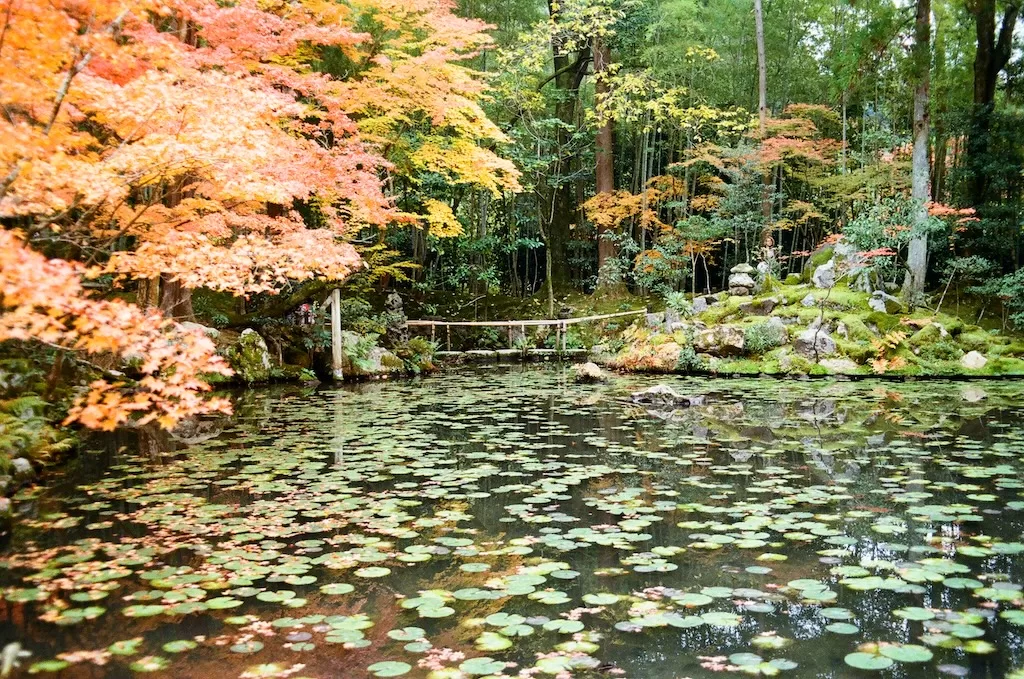
The Nanzen-ji Suirokaku Water Bridge
The Nanzen-ji acqueduct is a 19th century red brick public utility structure, a part of the Lake Biwa Canal system. The Lake Biwa Canal was a public project that the Governor of Kyoto proposed to revive Kyoto from economic and cultural decline after the Meiji reign moved its imperial seat from Kyoto to Edo (now Tokyo) in 1869.
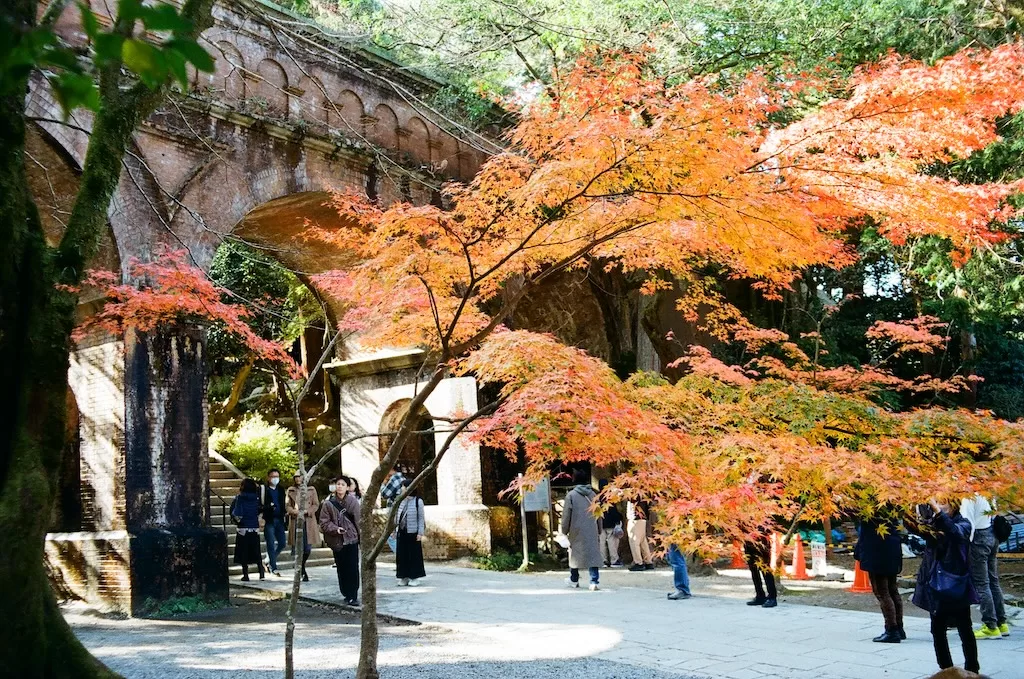
Lake Biwa is the largest freshwater lake in Japan. Beginning in 1890, the canal system draws water from Biwa Lake and in the process of channeling the water it provides Kyoto with both drinking and irrigation water, the source to power hydroelectric plants and also a passageway that enabled the transportation of goods. Tanabe Sakuro was the chief engineer for this project.
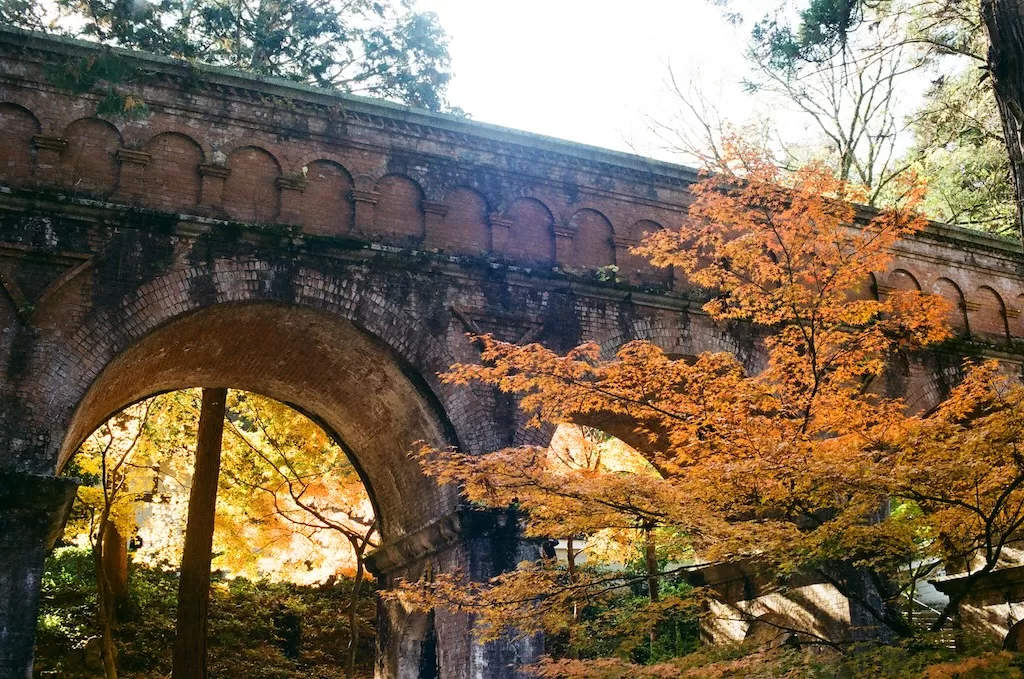
At that time in history, such an infrastructure was groundbreaking for Japan as the chief engineer drew upon the latest infrastructural expertise from the United States. The western style architecture of the aqueduct, named Suirokaku Water Bridge, with beautiful arches rolling to infinity, presents a remarkable juxtaposition to the traditional Japanese temples that span over the temple ground of Nanzen-ji.
The Biwa Canal system is still in use today for the transportation of water between Lake Biwa and Kyoto to fulfill water demand. However, the waterway no longer allows freight passage.
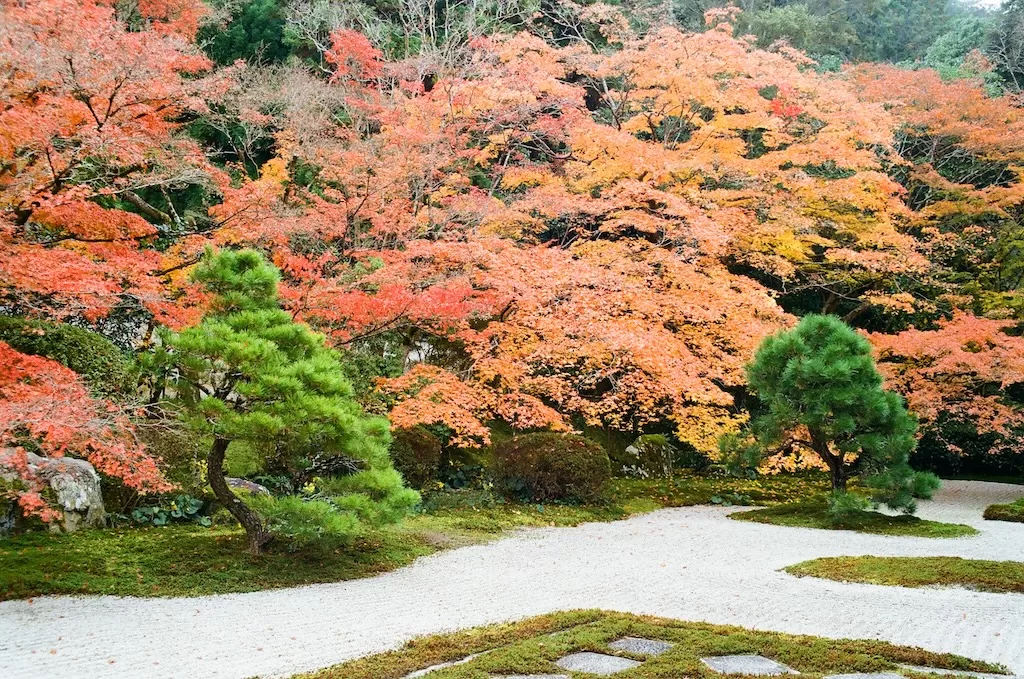
Sources
The Wikipedia on Nanzen-ji.
Nipponderful.com on Tenjuan Garden.
The Wikipedia on Nanzen-ji in Kyoto (Chin).
Japan-guide.com on Nanzenji Temple.
The Wikipedia on the Biwa Lake Canal.
Touristinjapan.com on Nanzen-ji Temple.
The Wikipedia on Kobori Enshu.

